The Kalmyk loop is a great all-purpose quick-release loop knot. It will hold securely until the working end is pulled (when it will open up) and can be used more conveniently where one might otherwise use a bowline or other fixed loop.
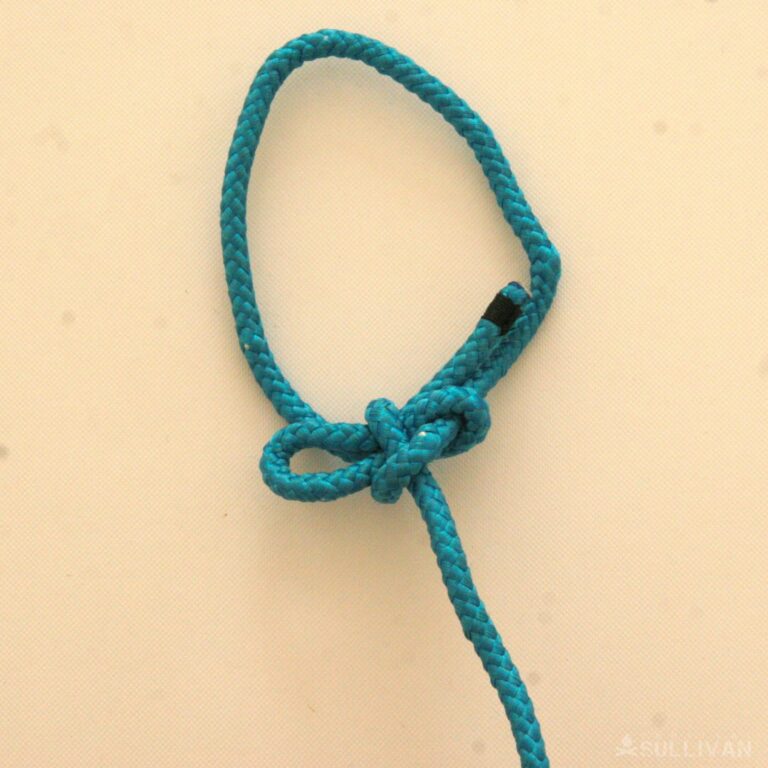
The Kalmyk Loop is technically a slipped Eskimo Bowline. The standard Bowline is made like a Sheet bend with two ends joined, and the Eskimo Bowline is made in the same way, but with different ends joined, so the sheet bend sits ‘sideways on’ to the resulting loop.
Slipping this (using a bight instead of the working end to finish the knot) makes a Kalmyk Loop.
The Kalmyk loop is named for the Kalmyks, an ethnic group of nomads in what is now western Russia, though it is relatively unknown in America and Western Europe.
Step 1. Form a loop around your hand:
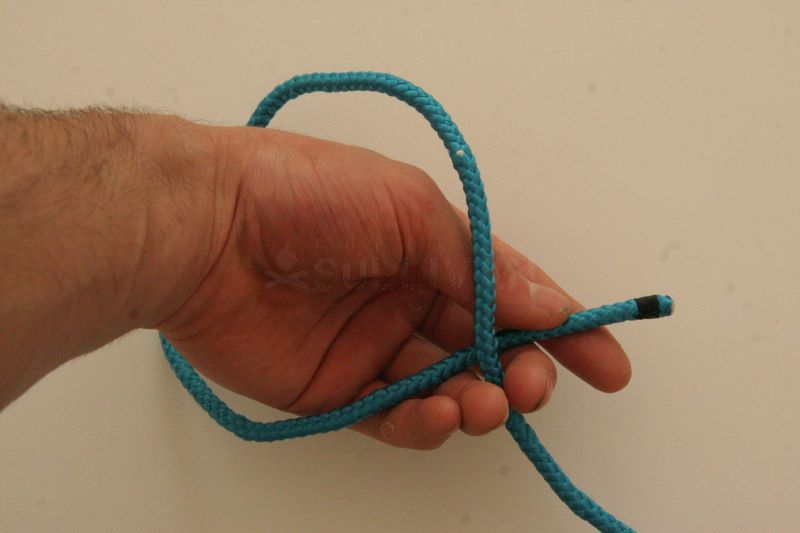
Step 2. Turn your hand towards you:
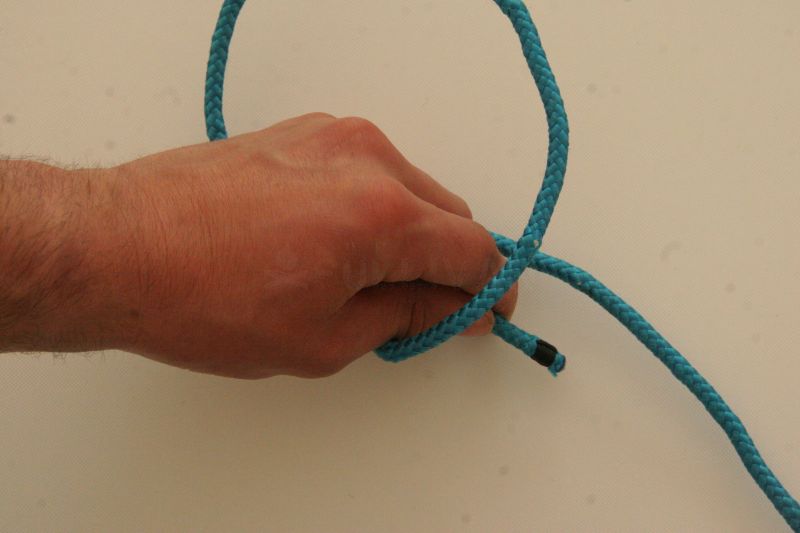
Step 3. Keep turning until your hand has turned over completely, and then wrap the standing end over your knuckles:
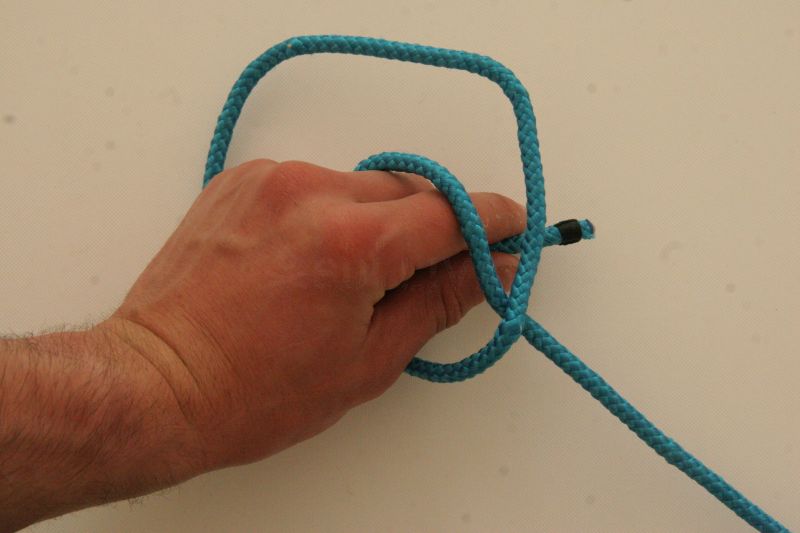
Step 4. Reach with your thumb and index finger under the standing end wrap your just made, but over the loop you made at the beginning.
Grab a bight in the working part, and pull it back over the loop and under the wrap, being sure that actual end of the working end remains outside of both:
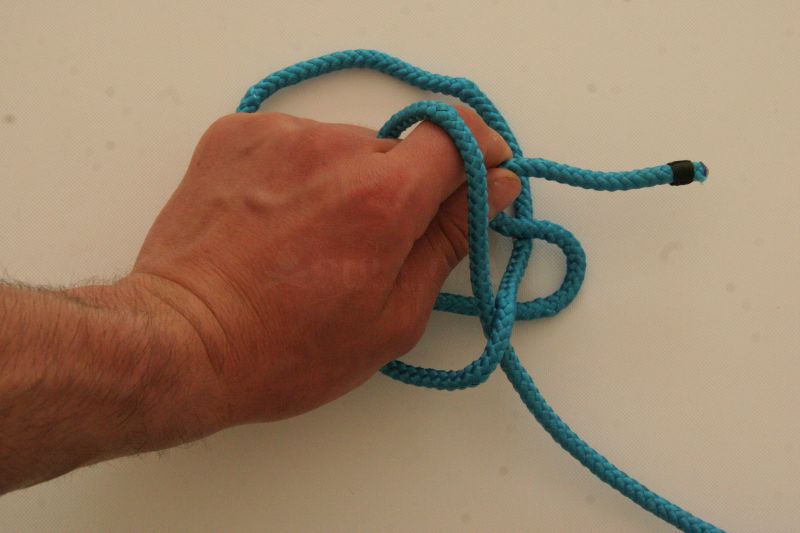
Step 5. Pull the bight in the working part back over the loop and under the wrap, being sure working end remains outside of both:
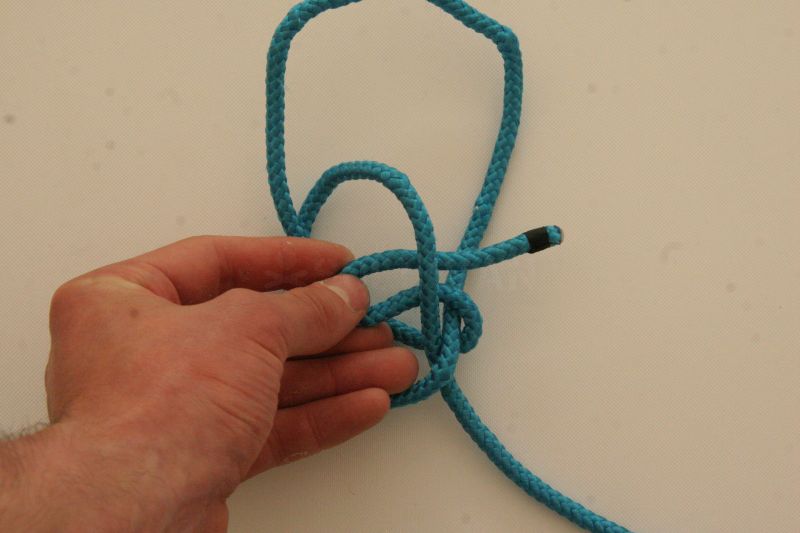
Final step. Pull on the standing end to tighten the knot up:

Related Knots
- The Kalmyk Loop can also be called a Slipped Eskimo Bowline, and is related to all standard and slipped versions of the bowline.
- Many other knots use the bight-as-a-quick-release principle, for example the Tumble Hitch, Mooring Hitch, and Farrimond Hitch.
Check out our knot guide too!
Conclusion
The Kalmyk Loop is the author’s favorite knot, for the number of different situations it covers. That said, this is one (of at least three) different ways of tying it, all of which are useful and worth learning to really get everything you can out of it.

Nick O’Law has been exposed to survival from a very young age. In his teenage years, he learned A LOT about bushcrafting, such as making snares and traps, and even how to make DIY knives.
If you haven’t ye read and tried his knot-making articles on Survival Sullivan, you should definitely check them out.
